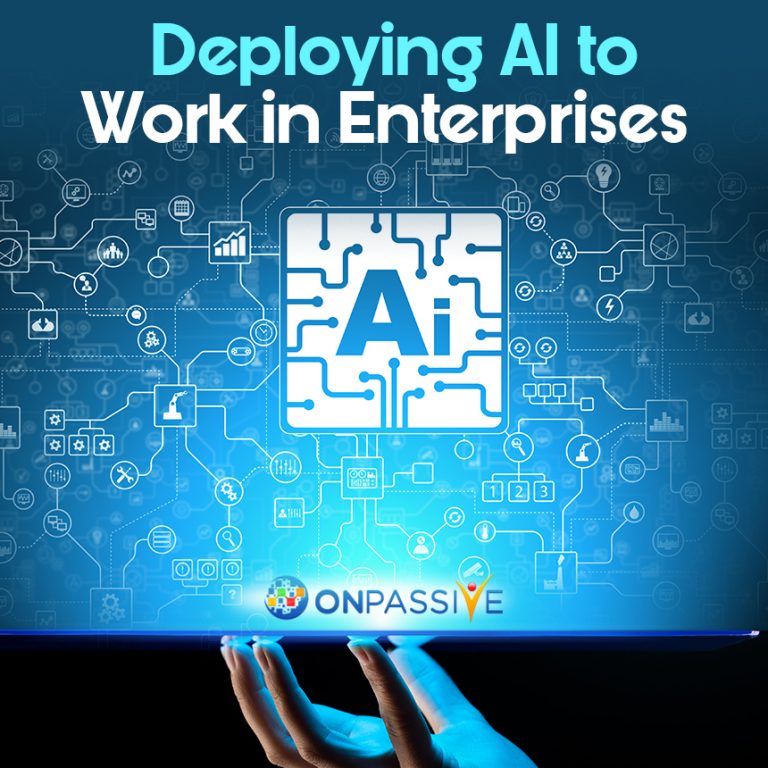
AI is rapidly moving from the imagination of science fiction to the need for real-world industry. But most enterprises are still struggling to take advantage of its full potential. We have identified the key obstacles to successful AI adoption at the Deloitte AI Institute and tackle those challenges head-on.
“The State of AI in the Enterprise, 3rd Edition,” technology implementation and financial investment in AI continue to grow dramatically, according to our latest global survey of AI trends. Survey participants say they are gaining a competitive advantage from AI, both in their own companies and across their sectors, and expect to see rising AI-powered change in the future.
Challenges of AI in the Workplace
Increased AI use, of course, is a double-edged weapon. On the one hand, this means that AI will be able to support more organizations. On the other hand, though, it levels the playing field and decreases the early movement’s benefit. Overall, this suggests that any company will need to strengthen its AI capabilities. Still, it will be much more difficult for those hoping to gain a competitive advantage through AI to function.
AI Use Cases in Various Business
The lack of business-specific use cases and solutions is one of the main obstacles to AI adoption. AI still provides only general capabilities that can be very useful for any form of organization. However, their real-world potential is restricted before those general skills can be implemented in unique ways to a specific form of company.
More and more enterprises have experimented with AI in recent years, advancing their data-related skills, gaining new technology and talent, and incorporating AI into their business processes. Yet, enterprises would need to continually push the limits of what they can do with AI in an age of ubiquitous AI, with advanced AI technologies readily accessible to everyone.
Implementing Trustworthy AI
A study found that considering the increasing importance of AI in industry, most participants still feel somewhat equipped to handle AI risks. Too few companies are adopting concrete practices to address those risks.
As AI extends into almost every modern living area, there is an exponential rise in its related risks. Unfortunately, “major” or “serious” concerns about potential risks for their AI initiatives are identified by more than half of respondents, and only four in 10 rate their organization as “completely prepared” to resolve them.
Moreover, 56 percent say that their organization is delaying the adoption of AI technologies because of the emerging threats, and the same proportion thinks that negative public expectations would slow or stop the adoption of certain AI technologies.
The innovation of AI via Collaboration
AI research and developments are progressing so rapidly that it is challenging to be entirely up to speed on anything for any company or to push systematic AI progress on its own. At the AI Institute, from entrepreneurs, investment firms, and universities to industry experts, consulting firms, research institutes, mature AI product companies.
We put together the best thinking and perspectives from every layer of the AI ecosystem. Then we combine these ideas with the in-depth market, technology, and applied AI experience of ONPASSIVE to launch discussions and speed up innovation.
Our current priorities include:
Designing business-specific use cases can help the company achieve competitive differentiation in an environment where AI is prevalent.
Resolving crucial issues related to AI ethics and trustworthiness.
- Widening AI innovation boundaries.
- Getting ahead of the COVID-19 pandemic’s rise in AI interest and adoption.
ONPASSIVE assists organizations through cutting-edge innovation and technology to improve AI. We question the status quo and advance AI and human-machine communication in communication with the brightest AI minds, including business thought leaders, start-ups, research & development teams, entrepreneurs, investors, and visionaries.



Shirley Dotson
3 years ago
Yvonne Finn
3 years ago
Mahmoud saeed Adam hazoat
3 years ago